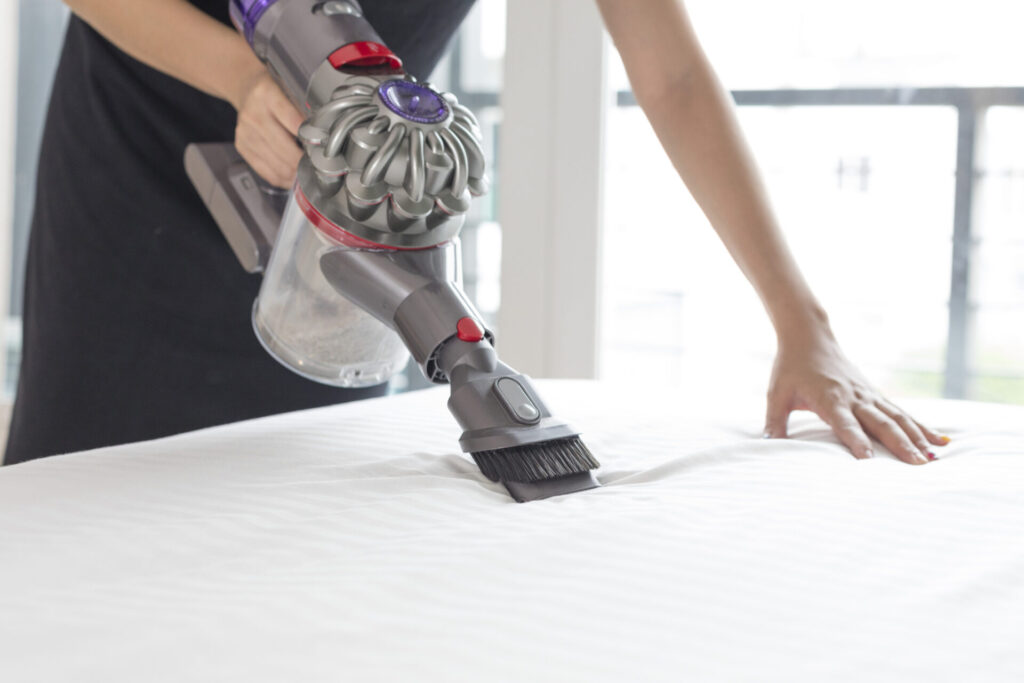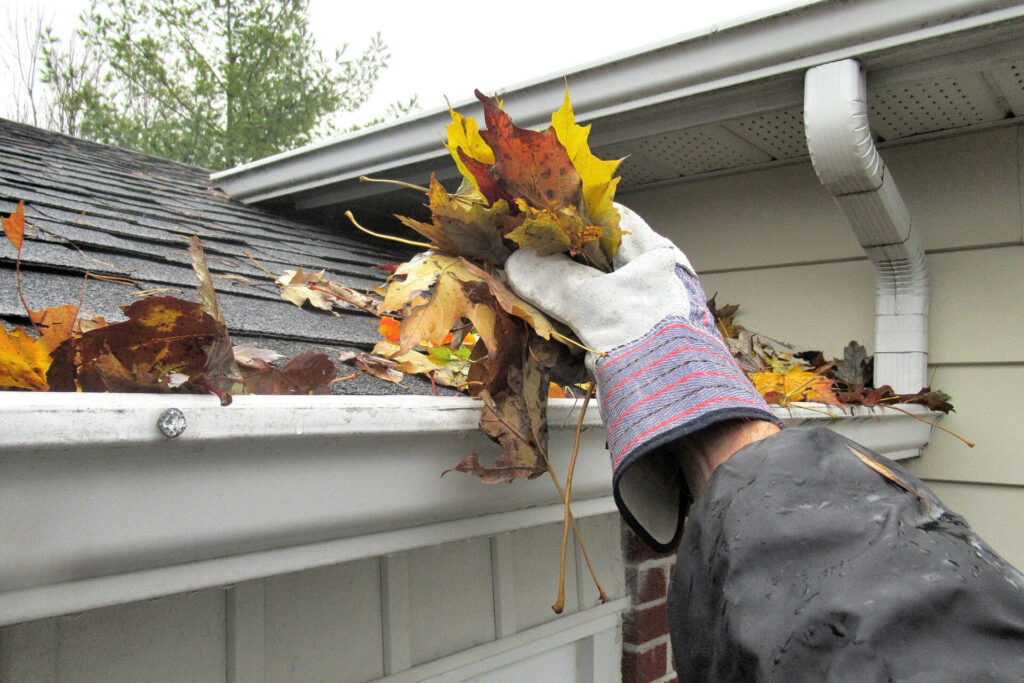With spring weather (eventually) on its way, here’s how to get your indoor and outdoor spaces ready.
The indoor spring checklist

We know you don’t need to be reminded to wash your windows and curtains or to change the battery in your smoke detector. We’re here to tell you that you need to dig into the yucky stuff, like cleaning gunky filters and getting in behind appliances. Will it be a little gross? Probably, but that’s why it’s got to be done.
Check your filters
When was the last time you cleaned your washing machine’s filter? It may be time if your clothes smell a little funky, even after a wash. That’s because washing machine filters collect hair, dirt and sometimes even clothing tags, which can make for stinky loads of laundry if left too long.
A clogged filter can also affect how your washer functions—some don’t drain properly if the filter isn’t lean, so your clothes will still be sopping wet at the end of a cycle. The filters are often behind a hatch on the front of the machine, close to the bottom right-hand corner, but check your manual to be sure.
Before you clean it, allow the emergency drain hose—if your machine has one—to empty into a bucket, pull out the filter, remove any debris and rinse gently. While at it, look at the filters on your fridge’s water dispenser, dishwasher and range hood. These can be breeding grounds for odour-causing bacteria, and clogged filters can also affect how well they work.
Shampoo your rugs
Unless your rug is an antique, a once-per-year deep clean is adequate, and it’s something you can do yourself. The steps are simple: shake out your small or medium-sized rug or hang a larger one over a railing and beat it to dislodge dirt. Apply rug shampoo with a sponge or soft-bristled brush, then scrub gently.
Synthetic rugs should be rinsed thoroughly by splashing water on them or spraying them with a hose. For a wool rug, rinse it by dunking a clean sponge or fibre cloth in a bucket of clean water and blotting away the soap. In both cases, once the soap is rinsed, blot away any excess water with clean towels and hang to dry, or lay flat over risers so air can circulate underneath. And don’t forget to sweep, vacuum and mop the floor where your rug usually sits before replacing it.
Sweep and mop behind your appliances
Dust, dirt and debris (including pet hair and the occasional errant spice bottle or cookie cutter) have likely been collecting behind and below your stove and fridge all year. To clean, pull your appliances straight out and away from the wall. (Moving them from side to side can damage your floor.) Then sweep and mop the floor and give the walls a scrub with a sponge and soapy water. Ensure everything is dry before moving your appliances back into place.
Clean your mattress
Deep cleaning your mattress doesn’t just banish dirt, dust and dead skin (yuck)—it also extends its life. Toss all your bedding in the wash, then spot-treat any fresh stains on the mattress itself. (Remember: blot, don’t rub.) Then vacuum, using the crevice tool to get at the dirt that collects in seams or the folds of the pillowtop.
After that, depending on severity, spot-treat old stains using upholstery cleaner or a mixture of dish detergent and warm water. Then sprinkle with baking soda and leave for 24 hours for maximum deodorizing. Finally, give the mattress one more vacuum, and then you’re done—until next spring, at least.
The outdoor spring checklist

Do these five things to say a final goodbye to winter and prepare to welcome spring.
Check on your roof
Snow, ice and wind can wreak havoc on your roof. If you’re handy (and not afraid of heights), pull out the ladder, put on a safety harness and head up to the roof to see if any shingles are loose, damaged or curling up at the sides. You should also look out for damage to your soffits and fascia (just underneath the roof), crumbling brick on your chimney and signs of water damage on your interior ceilings. Many professional roofers offer spring maintenance packages if you are uncomfortable climbing up.
Clean your gutters and downspouts
Many homeowners make a point of cleaning their gutters in the fall, but you should give them another look once spring arrives—twigs, pine needles, and other debris can accumulate over the winter months, and if it’s not removed, those April showers can lead to mould, leaks, wet basements and even pest infestations.
Inspect your windows and doors
Look out for cracked or loose weather stripping, which can lead to water damage because it allows air exchange and can decrease efficiency. To patch small tears or rips in your window screens or screen doors, push the strands of metal together and apply a thin layer of clear nail polish or household cement to seal. (You may need to apply a few layers; let each coat dry between applications.)
Scope out your basement
Basement flooding can happen at any time of year, but spring storms (and rapidly melting snow) certainly don’t help. To prevent costly repairs down the road, seal any cracks or leaks in your foundation, basement walls and around basement doors and windows.
Make sure the ground around the perimeter of your home slopes away from the foundation. If it doesn’t, order a load of soil from your local garden supply store and use that to build up the ground closest to your exterior walls. Add shrubs and plants around your home to help absorb excess water.
Refresh your lawn
Once you’ve raked up leaves, branches and dead grass from your lawn, look for any sunken spots, which may be caused by erosion, a tree stump or drainage issues. Your soil delivery will come in handy here, too. Fill the hole so that the dirt is an inch or so higher than the surrounding grass; as it settles, it will level out. And consider aerating your lawn; this means removing plugs of dirt from your lawn so air, water and nutrients can reach the roots of the grass.
Yard-to-roof coverage
As part of your spring checklist, review your home insurance policy to see if it might need to be updated. Not with CAA? Visit GetCAAInsurance.ca for a complimentary quote today.
Property Insurance is underwritten by CAA Insurance Company. Certain conditions, limitations and underwriting guidelines apply.


